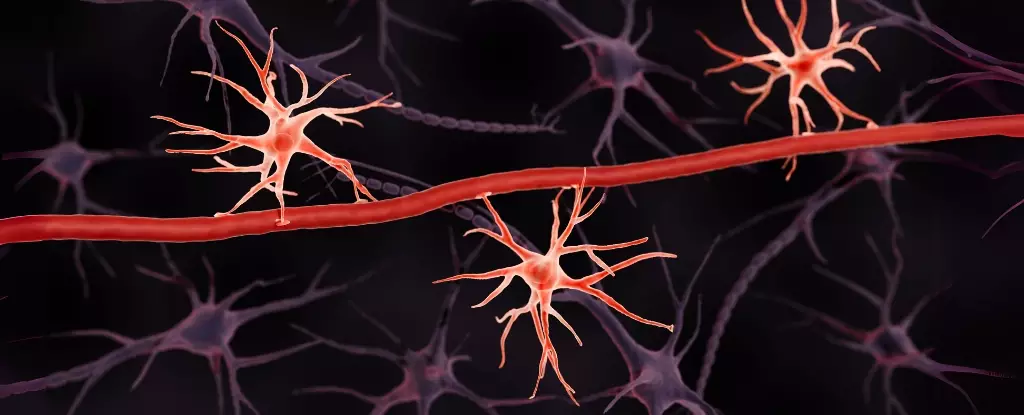Recent groundbreaking research has illuminated a fresh pathway in the pursuit of effective treatments for neurodegenerative diseases, particularly Alzheimer’s disease. By focusing on inflammation in the brain, scientists at Case Western Reserve University (CWRU) have unveiled a new drug capable of bolstering the blood-brain barrier in mice. This discovery marks a significant departure from existing treatments that primarily target amyloid protein accumulation, the traditional focus of Alzheimer’s therapies, which have proven less effective and often fraught with adverse side effects. As pathologist Sanford Markowitz stated, the revelation that the drug inhibits brain inflammation and protects this vital barrier opens exciting potential for innovative treatment approaches moving forward.
The Blood-Brain Barrier: A Crucial Line of Defense
The blood-brain barrier serves as the brain’s security system, filtering out harmful substances from the bloodstream and protecting fragile neural tissue. Deterioration of this barrier has been identified as a pivotal factor in the progression of various dementias, including Alzheimer’s disease. The importance of maintaining the integrity of this barrier cannot be overstated: when compromised, brain cells become vulnerable to toxins, pathogens, and other dangers, further exacerbating neurodegenerative conditions. This context underscores the relevance of the recent discovery, as protecting and repairing the blood-brain barrier could hold the key to alleviating cognitive decline in millions worldwide.
15-PGDH: The Game Changer in Alzheimer’s Treatment
Researchers focused their efforts on an immune protein known as 15-PGDH, which is notably elevated in neurodegenerative conditions among both mice and humans. The development of SW033291, a compound designed to inhibit the activity of this enzyme, has demonstrated remarkable efficacy. In studies, treated mice displayed intact blood-brain barriers and preserved cognitive functions even after sustaining traumatic brain injuries. Neuroscientist Andrew Pieper’s observations on the complete preservation of memory and cognitive capacity in these mouse models highlight a promising victory in the battle against Alzheimer’s. This contrast with traditional treatments brings optimism to the field, suggesting a new direction in developing therapeutics that don’t merely impede amyloid deposition but tackle the underlying inflammation that precipitates neural damage.
Confronting the Growing Crisis of Cognitive Decline
With nearly ten million new dementia cases emerging worldwide each year, the urgency for effective treatment solutions cannot be overstated. The escalating prevalence of cognitive decline, affecting both individuals and their families, amplifies the demand for innovative strategies such as this. Although this groundbreaking study represents a significant advancement, it is crucial to acknowledge that the journey is far from over. The challenge now lies in translating these promising results from animal models to human applications, a feat that necessitates further research and clinical trials.
A Call to Action in Neurodegenerative Research
The research team’s findings suggest that 15-PGDH serves not just as a marker of neuronal health, but as a potent target for therapeutic interventions aimed at safeguarding the brain from neurodegenerative conditions. This novel approach emphasizes the potential to revolutionize treatments for Alzheimer’s and beyond, underscoring the importance of continuous exploration and innovation in this critical area of medical science. As the research progresses, the scientific community stands poised on the brink of a paradigm shift, one that may dramatically alter the landscape of dementia treatment and enhance countless lives impacted by these devastating diseases.

